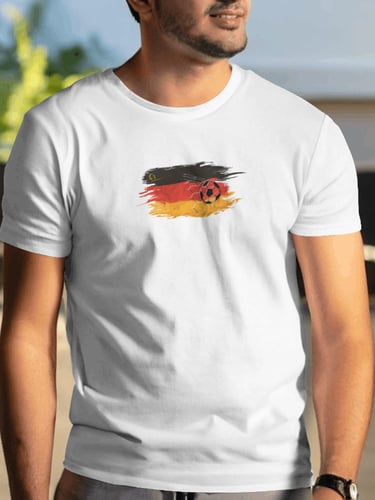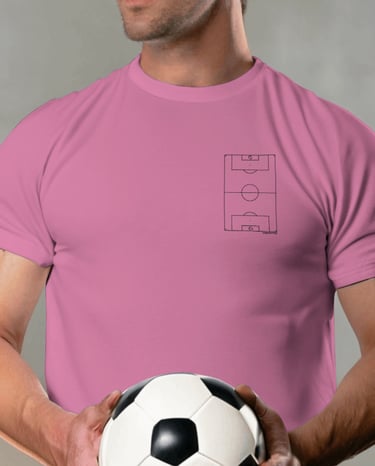Football Jersey
NICE TO KNOW
After the last blog about self-employment, I want to write about a current and entertaining topic this time – the German jersey. Football excites millions of people worldwide, and the European Championship is always a highlight in the sports calendar. Particularly this year in Germany, the focus was not on the sport itself, but on the football jersey of the German national team. Football jerseys have always held a special significance for fans and players. Many see and feel it not just as a symbol for the team but also as an expression of national identity and culture.
Currently, the pink away jersey of the German national team for the EM 2024 is causing a lot of discussions. The "bold" design is a clear break from the subtle and perhaps dull colors of the past like white and black. Fun fact: In color theory, white and black are often not defined as "true" colors because white is the result of the combination of all visible light colors and black is the absence of light. In short: traditional jerseys are "colorless."
The current main debate revolves around whether the jersey is "too woke" or "not masculine enough." Some critics see the color choice as an attempt to be politically correct and challenge traditional notions of masculinity. Others praise the jersey for its originality and see it as a sign of openness and modern style in football. These differing views illustrate how strongly emotions and societal norms influence the perception of colors. The question of masculinity and color takes us back to deeply rooted cultural norms that are continuously questioned and redefined throughout history.
Historically, pink was not always perceived as a feminine color. In the 18th and 19th centuries, pink was often seen as a color for boys, considered strong and decisive, while blue was seen as gentle and suitable for girls. It wasn't until the 20th century, particularly after World War II, that these color associations began to reverse, partly due to the marketing of children's clothing and toys. This shift highlights how cultural and societal norms can influence the perception of colors and how flexible these perceptions are over time. Ask yourself why you might assign a gender to a color. The reality is, there is no logical explanation for it—colors have no gender. Major companies have created these distinctions to increase sales. In short, our perception of which color is masculine or feminine has been shaped by effective marketing.
The pink away jersey of the German national team for the 2024 European Championship has already garnered significant interest in pre-sales. Despite the controversies, it seems that the bold color choice appeals to many younger fans who value modern and unconventional designs. Official sales figures show record-breaking numbers, though critics who dislike the colors or feel their masculinity is threatened claim these figures are fake news. Nevertheless, the jersey has achieved its goal: generating buzz and evoking emotions – a complete marketing success. This type of discussion shows how a simple piece of clothing can become a cultural phenomenon and how effective strategic marketing can be in reaching a broad audience.
In conclusion, Matze's practical tips: You see how something as simple as a color can create buzz and be discussed in the media for months. Take this as an example for your own projects; often, it doesn't take a grand marketing idea to attract attention. If you can stand out from the competition with simple means, then do it! And for everyone else: It's just a T-shirt with a color :-)… stay tuned…





